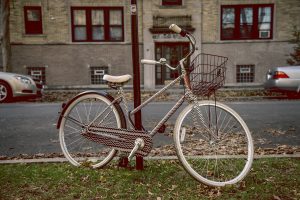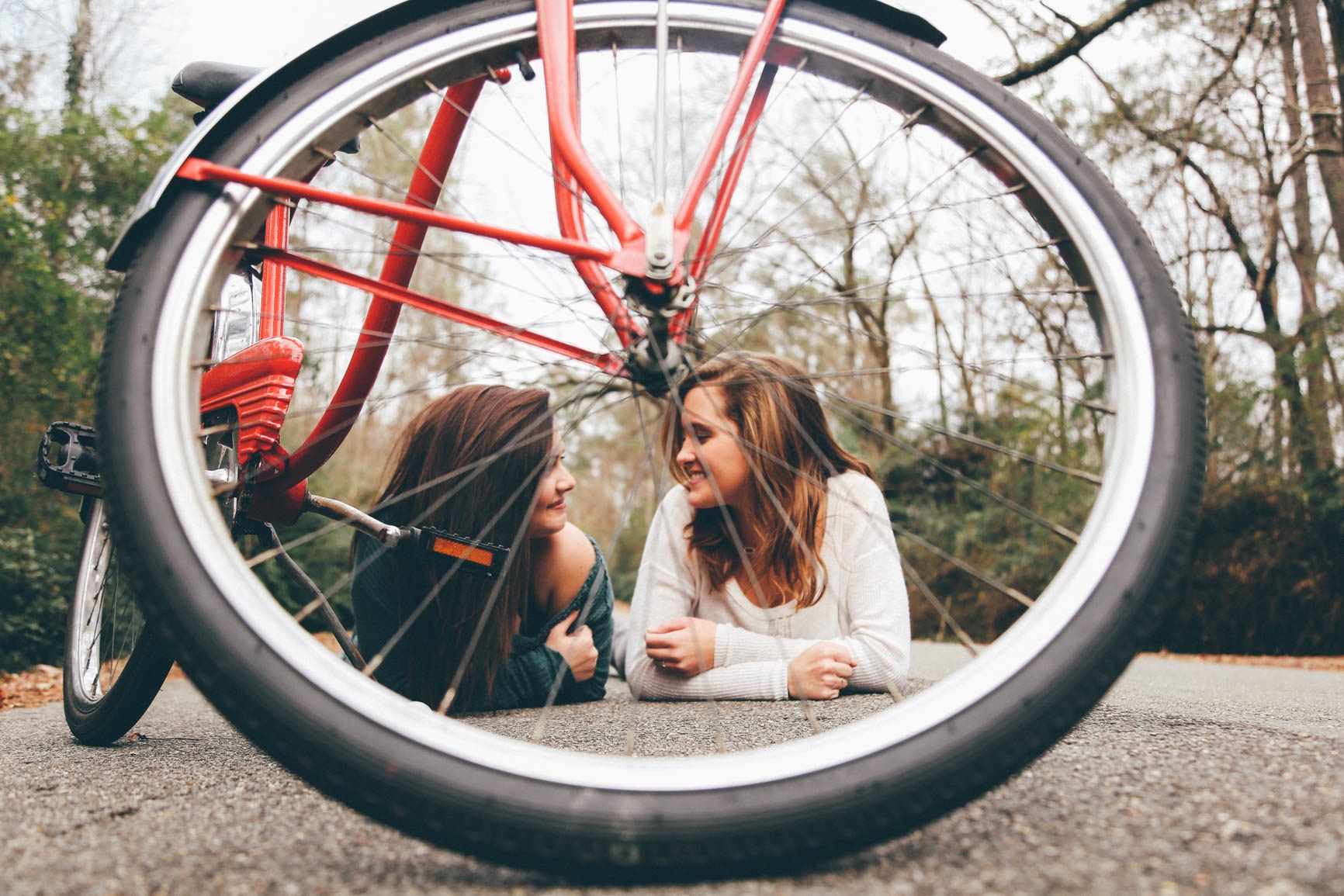Bike-to-school day is in May each year with some schools extending the event to a bike-to-school week or month. But biking to school provides young people with so many benefits that it shouldn’t be a brief event near the end of the school year. It should be routine.
Fewer and fewer students are riding their bikes to school. The figures vary according to region, but in all parts of North America cycling and walking to school has fallen anywhere from ten to thirty percent. In an era where childhood obesity and the need to reduce CO2 emissions are top concerns, this doesn’t make sense.
Biking is good for health and community building, and it provides students with academic advantages. It is also good for the environment at the global and local level. Parents and teachers should be thinking about biking to school now, so they can implement a cycling program in the coming school year.
Bike to School for Health
Cycling gets kids outside and moving, which we all know to be a good thing. Cycling is particularly good for cardiovascular health. By middle school, kids should be engaging in at least an hour of heavy activity per day. Riding to school can take care of that health requirement with little impact on the family schedule. In fact, riding a bike through an urban or suburban area a distance of five kilometers or three miles is typically faster than driving the same distance. A morning bike ride gets kids blood flowing so that they arrive at school alert and ready to learn.
Bike to School for Community
One of the most effective ways to ensure safety on a bicycle is to ride as a group. Many schools have bike train programs for the ride to and from school. Riders meet at one central location for the ride to school, or the train picks up riders along the route to school. This gets kids, parents and teachers outside and talking to one another. Spending time together as a group fosters a positive sense of community.
Bike to School for Brain Power
Physical activity has a positive impact on the brain. Physical fitness has been linked to increased cognitive function, improved memory and superior language skills in children. Students who engage in physical activity before school are more able to stay on task. This has been shown to be most true for children who have difficulty settling down. Mike Sinyard was so impressed by the benefits of cycling to his own brain function that he founded the Specialized Foundation, an organization dedicated to funding original research on the benefits of cycling. The foundation is currently helping schools set up cycling programs and working with Sanford University to research the benefits of cycling for children with ADHD.
Any physical activity will improve brain function, but a developmental advantage specific to biking or walking to school has been discovered. A recent study compared the geographical abilities of children who were driven to school with the abilities of the children who biked or walked. Children who rode or walked to school were able to draw a far more complex and detailed map of their community than children who experienced their local area from within a car. The study also found that children’s perceptions of their community were different based on their mode of transport. Children who rode or walked to school depicted the trees and places that they liked to play. Children who were driven to school depicted more dangers such as cars in their neighborhoods.
 Bike to School for a Better World
Bike to School for a Better World
In the 1960s, 48% of American students biked or walked to school and 12% were driven in the family vehicle. In 2009 a mere 13% biked or walked and 45% were driven to school. It is estimated that a return to 1960s level of active transport would save 3.2 billion vehicle miles, 1.5 million tons of carbon dioxide, 89,000 tons of other pollutants in a year. This is the equivalent of taking 250,000 cars off the road for a year.
The air quality in the school’s vicinity would improve vastly as well. Consider a middle school with 500 children. Let’s assume the school is at 2009 levels, and that each car delivers 1.5 children to school. That means 65 children walk or bike to school and 150 cars drive to the school twice each day. If transport reverted to 1960s level, 225 students would walk or bike and only 40 cars would drive. That’s a huge reduction in emissions in the vicinity of the school.
Biking and Safety
What about safety? According to Bruce Appleyard, the author of the geography study cited above, North Americans are in a negative cycle. Parents drive children to school because of safety concerns, which puts more vehicles on the road, which then creates more safety concerns. The only way to turn this around is to find ways to stop driving kids to school.
There are many things you can do to improve the cycling safety for children. Educate them in bike safety. Develop safe routes in your community. Start a cycling train, and work with the police and city planners in your community to create safe routes for bikes. When cycling programs are established, the safety on the roads improves. Numerous studies indicate that more cyclists on the road make the roads safer for cyclists.
Start Biking Now
Make a positive impact, do what you can to get kids on their bikes every day. Your classroom and your community will be better for it. Not sure where to start? Look online for a cycling organization in your area. They will have practical tips for your area as well as a list of resources. Another great resource is the safe routes to school program that operates in the United States and Canada.
 Want to learn more about how bicycles can change the world? Check out Pedal It! by Michelle Mulder, a book in the Orca Footprints series.
Want to learn more about how bicycles can change the world? Check out Pedal It! by Michelle Mulder, a book in the Orca Footprints series.

